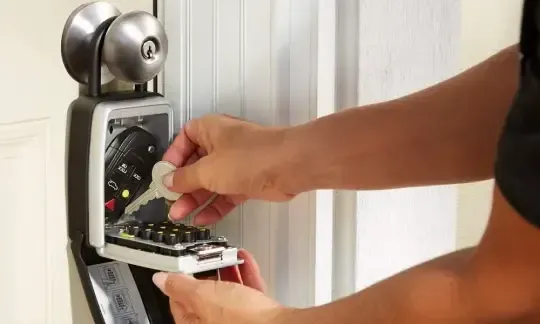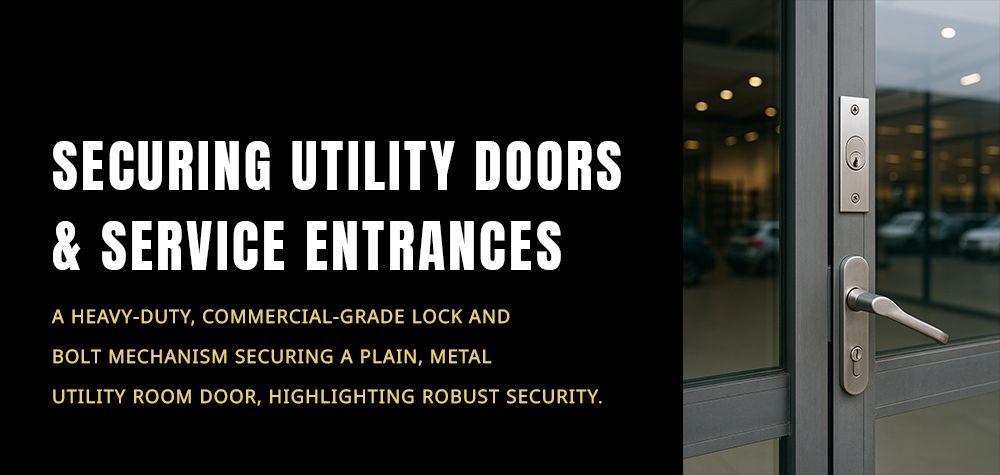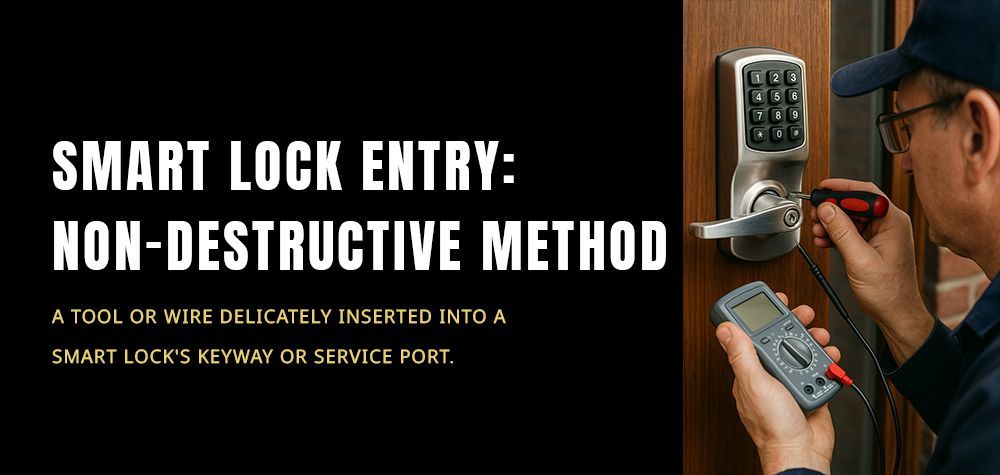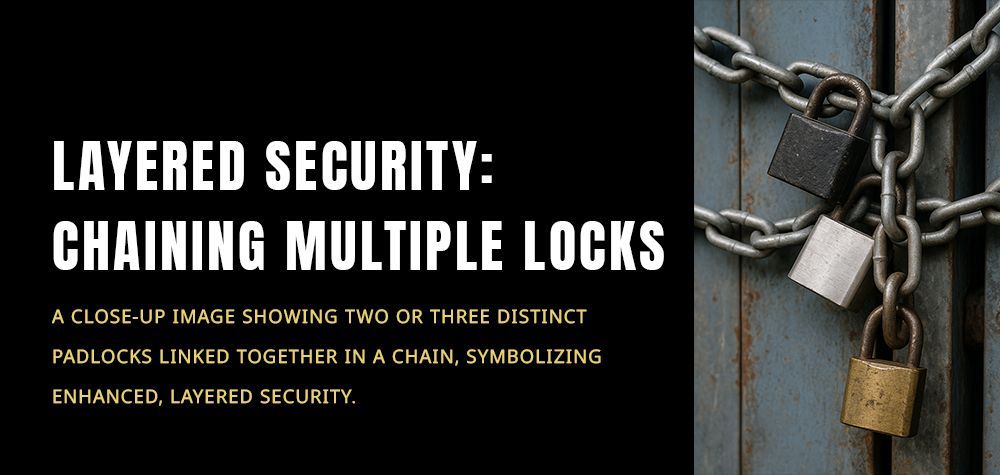How To Open A Lockbox Without A Key
Lockboxes are designed to provide a secure method for storing keys, access cards, and other valuables while allowing authorized individuals to access them when needed. These security devices typically feature robust construction and various locking mechanisms to deter unauthorized access. The level of security offered by a lockbox depends on factors such as its design, materials, and locking mechanism.
Modern lockboxes may utilize electronic keypad locks, combination dials, or traditional key-operated locks to control access. Additionally, some lockboxes incorporate advanced security features such as tamper-resistant construction, anti-shimming mechanisms, and weatherproof seals to enhance their security. However, despite these measures, it's essential to understand that no lockbox is entirely impervious to tampering or bypassing methods. Therefore, it's crucial for users to be aware of potential security risks and take appropriate precautions to safeguard their belongings.
Read more about How Secure Are Lockboxes?
Bypassing Methods
Manipulating the Lock's Actuator
Manipulating the lock's actuator is a method commonly used by intruders to bypass the locking mechanism of a lockbox. The actuator is the component responsible for controlling the locking mechanism, such as the latch or bolt, inside the lockbox. By manipulating the actuator, intruders attempt to disengage the locking mechanism without the need for a key or combination.
Method:
- Intruders may use various tools, such as picks, wires, or improvised tools, to manipulate the actuator through the keyway or other access points in the lockbox.
- The goal is to move the actuator in such a way that it releases the locking mechanism, allowing the lockbox to be opened without a key.
Security Risks:
- Manipulating the lock's actuator requires skill and precision, but it can be effective against certain types of locks, particularly those with simple or vulnerable mechanisms.
- This method poses a security risk as it bypasses the intended security features of the lockbox, potentially allowing unauthorized access to its contents.
- Lockboxes with insufficiently protected actuators or weak internal mechanisms are particularly susceptible to this method of bypassing.
Countermeasures:
- Choose lockboxes with robust locking mechanisms and tamper-resistant designs to minimize the risk of actuator manipulation.
- Regularly inspect and maintain lockboxes to ensure that internal components are in good condition and functioning correctly.
- Implement additional security measures, such as surveillance cameras or alarm systems, to deter and detect unauthorized access attempts.
Shimming
Shimming is a method commonly employed to bypass the locking mechanism of certain types of lockboxes, particularly those equipped with padlocks or similar mechanisms. This technique involves the use of thin, flexible tools, known as shims, to manipulate the locking mechanism or bypass it entirely.
Method:
- Intruders insert a shim, typically made of metal or plastic, between the shackle and the body of the lockbox.
- The shim is manipulated to apply pressure to the locking mechanism, such as the spring-loaded latch or bolt, causing it to disengage and release the shackle.
- With the shackle released, the lockbox can be opened without the need for a key or combination.
Security Risks:
- Shimming exploits vulnerabilities in the design or construction of the lockbox, particularly in the shackle mechanism.
- Lockboxes with inadequate shackle clearance or weak shackle retention are particularly susceptible to shimming.
- This method can be relatively quick and discreet, making it a preferred choice for intruders seeking covert access to locked compartments.
Countermeasures:
- Select lockboxes with reinforced shackle mechanisms and anti-shimming features to minimize the risk of unauthorized access.
- Regularly inspect lockboxes for signs of tampering or attempted shimming, such as scratches or damage around the shackle area.
- Educate users on proper lockbox security practices, including the importance of securely locking the shackle and avoiding leaving the lockbox vulnerable to shimming attacks.
Read more about Guide to door lock lubricant!
Picking
Lock picking is a technique commonly associated with opening traditional key-operated locks, and it can also be employed to bypass the locking mechanisms of certain types of lockboxes. This method involves manipulating the internal pins or tumblers inside the lock to simulate the action of a correct key, thereby releasing the locking mechanism and allowing the lockbox to be opened without a key.
Method:
- Intruders use specialized tools, such as lock picks or tension wrenches, to manipulate the pins or tumblers inside the lock.
- By applying tension to the lock with the tension wrench and individually manipulating each pin or tumbler with the lock pick, intruders attempt to align them at the shear line, where the lock can be turned and the mechanism released.
- With the pins aligned correctly, the lockbox can be opened without the need for a key or combination.
Security Risks:
- Lock picking requires skill, patience, and knowledge of lock mechanisms, but it can be effective against certain types of locks, particularly those with simple or vulnerable pin configurations.
- Lockboxes with standard pin tumbler mechanisms are susceptible to picking if not adequately protected against manipulation.
Countermeasures:
- Choose lockboxes with advanced locking mechanisms, such as high-security pin tumbler locks or electronic locks, to minimize the risk of picking.
- Regularly inspect and maintain lockboxes to ensure that internal components are in good condition and functioning correctly.
- Implement additional security measures, such as surveillance cameras or alarm systems, to deter and detect unauthorized access attempts, including picking.
Decoding
Decoding is a method used by intruders to bypass the locking mechanism of certain types of lockboxes by analyzing the lock's internal mechanism to determine the correct combination or key pattern. This technique relies on understanding the design and operation of the lock to deduce the correct combination or key code, allowing the lockbox to be opened without the need for a key.
Method:
- Intruders examine the lockbox's internal mechanism, including the arrangement of pins, tumblers, or discs, to identify patterns or vulnerabilities that can be exploited.
- By analyzing the behavior of the lock when manipulated, intruders attempt to deduce the correct combination or key code through trial and error.
- With the correct combination or key code determined, the lockbox can be opened without the need for a key or combination.
Security Risks:
- Decoding exploits weaknesses in the design or construction of the lockbox, particularly in the mechanism used to secure it.
- Lockboxes with simple or predictable combination mechanisms are particularly susceptible to decoding attacks.
Countermeasures:
- Choose lockboxes with advanced combination mechanisms, such as random or programmable combinations, to minimize the risk of decoding.
- Regularly update and change the combination or key code of lockboxes to prevent unauthorized access.
- Implement additional security measures, such as surveillance cameras or alarm systems, to deter and detect unauthorized access attempts, including decoding.
Read more about Lock a door without lock!

Drilling
Drilling is a method employed as a last resort to gain access to a lockbox when other bypassing methods have failed or are impractical. This technique involves drilling through the lock mechanism or its housing, effectively destroying the lock and allowing the lockbox to be opened without the need for a key or combination.
Method:
- Intruders use power drills equipped with drill bits to bore holes through the lock's housing or keyway, targeting critical components such as the pins, tumblers, or locking mechanism.
- By drilling strategically, intruders aim to disable the locking mechanism or create enough space to manipulate the internal components and release the lockbox's latch or bolt.
- With the lock disabled or bypassed, the lockbox can be opened without the need for a key or combination.
Security Risks:
- Drilling is a destructive method that causes irreparable damage to the lockbox and may render it unusable.
- Lockboxes subjected to drilling attacks may require costly repairs or replacement, and the contents may be compromised or damaged in the process.
- This method is typically noisy and conspicuous, making it less suitable for covert entry attempts.
Countermeasures:
- Choose lockboxes constructed from durable materials and equipped with reinforced housings to withstand drilling attacks.
- Install lockboxes in secure locations with limited visibility and access to deter potential intruders from attempting drilling attacks.
- Implement additional security measures, such as alarm systems or surveillance cameras, to detect and deter unauthorized access attempts, including drilling.
Prying
Prying is a method employed by intruders to forcibly open a lockbox by applying physical force to compromise its integrity. This technique involves using tools or implements to exert pressure on the lockbox's components, such as the housing or shackle, with the aim of bypassing the locking mechanism and gaining access to its contents.
Method:
- Intruders use tools such as pry bars, screwdrivers, or crowbars to apply leverage and force to the lockbox's components, particularly around vulnerable areas such as the shackle or seams.
- By wedging the tool between the lockbox's components and applying force, intruders attempt to deform or break the lockbox's housing or shackle, allowing it to be forcibly opened.
- With sufficient force applied, the lockbox's locking mechanism can be compromised, and the contents accessed without the need for a key or combination.
Security Risks:
- Prying is a destructive method that can cause significant damage to the lockbox and may render it unusable.
- Lockboxes subjected to prying attacks may require costly repairs or replacement, and the contents may be compromised or damaged in the process.
- This method is typically noisy and conspicuous, making it less suitable for covert entry attempts.
Countermeasures:
- Choose lockboxes constructed from durable materials and equipped with reinforced components to withstand prying attacks.
- Install lockboxes in secure locations with limited visibility and access to deter potential intruders from attempting prying attacks.
- Implement additional security measures, such as alarm systems or surveillance cameras, to detect and deter unauthorized access attempts, including prying.
Cutting
Cutting is a method utilized by intruders as a brute-force approach to gain access to a lockbox by physically severing its components. This technique involves using cutting tools or implements to damage or remove critical parts of the lockbox, such as the shackle or housing, to bypass the locking mechanism and access its contents.
Method:
- Intruders employ cutting tools such as bolt cutters, angle grinders, or saws to sever or weaken the lockbox's components, particularly around vulnerable areas such as the shackle or seams.
- By applying force and leveraging the cutting tool's sharp blade or abrasive disc, intruders attempt to cut through the lockbox's materials, including metal, plastic, or other construction materials.
- With sufficient cutting force applied, the lockbox's locking mechanism can be compromised, and the contents accessed without the need for a key or combination.
Security Risks:
- Cutting is a highly destructive method that can cause irreversible damage to the lockbox, rendering it unusable and necessitating replacement.
- Lockboxes subjected to cutting attacks may require costly repairs or replacement, and the contents may be compromised or damaged in the process.
- This method is typically noisy and conspicuous, making it less suitable for covert entry attempts.
Countermeasures:
- Choose lockboxes constructed from durable materials such as hardened steel or alloy, designed to withstand cutting attempts.
- Install lockboxes in secure locations with limited visibility and access to deter potential intruders from attempting cutting attacks.
- Implement additional security measures, such as alarm systems or surveillance cameras, to detect and deter unauthorized access attempts, including cutting.
Conclusion
Securing lockboxes against unauthorized access is paramount to protecting valuable assets and ensuring peace of mind. In this comprehensive exploration of various methods used to bypass lockbox security, we've examined the techniques intruders employ to gain entry without a key. From manipulating the lock's actuator to destructive methods like cutting and drilling, each approach poses unique risks and challenges.
Despite the diverse range of bypassing methods, there are steps individuals and organizations can take to bolster lockbox security. By selecting high-quality lockboxes with advanced locking mechanisms and tamper-resistant designs, the risk of unauthorized access can be minimized. Regular maintenance, surveillance, and implementing additional security measures further fortify defenses against intrusion attempts.
Understanding the vulnerabilities inherent in lockboxes empowers users to take proactive measures to mitigate risks and enhance security. Whether through reinforcing lockbox materials, monitoring access points, or implementing alarm systems, safeguarding lockboxes against unauthorized access requires diligence and foresight.
Call Us Any Time!









